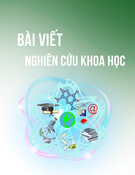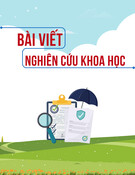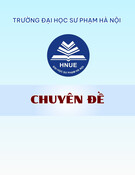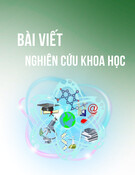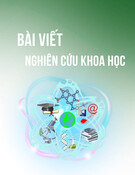
139
HNUE JOURNAL OF SCIENCE
Educational Sciences 2024, Volume 69, Issue 4, pp. 139-146
This paper is available online at https://hnuejs.edu.vn
DOI: 10.18173/2354-1075.2024-0171
FACEBOOK ADDICTION AND RESILIENCE AMONG STUDENTS
AT HO CHI MINH CITY UNIVERSITY OF CULTURE
Ngo Quang Dung and Ho Thi Truc Quynh*
Department of Psychology and Education, University of Education, Hue University,
Thua Thien Hue province, Vietnam
* Corresponding author: Ho Thi Truc Quynh; e-mail: httquynh@hueuni.edu.vn
Received January 19, 2024. Revised April 20, 2024. Accepted April 27, 2024.
Abstract. This study aims to investigate the rate of Facebook addiction, resilience level, and
the relationship between the two factors in a sample of students at the University of Culture,
Ho Chi Minh City. Through a cross-sectional study design and convenience sampling
method, we collected data from 357 students. The Bergen Facebook Addiction Scale and the
Connor-Davidson Resilience Scale were used to assess the current status of the research
problem. The SPSS 20.0 software was used for statistical analyses, including Cronbach's
alpha reliability analysis, descriptive statistics, and an independent samples t-test. Research
results showed that 59.4% of students are at risk of Facebook addiction; students' resilience
is low (M = 17.43 and SD = 7.53), and Facebook addiction does not have a significant
correlation with students' resilience (r = -0.065, p > 0.05). The above results suggest that
specific measures are needed to reduce the rate of students at risk of Facebook addiction and
enhance resilience for students at the University of Culture, Ho Chi Minh City.
Keywords: Facebook addiction, resilience, relationships.
1. Introduction
As of May 2023, Facebook has 3.03 billion users. For many users, using Facebook has
become an important part of daily life [1] and some people seem to lose control of their Facebook
use and develop a strong psychological need to always be online, accepting the possible negative
consequences of this behavior [2] - the so-called Facebook addiction [3]. Facebook addiction is
defined as “excessive involvement in Facebook activities and is a frequent cause of problems in
daily social functioning” [4]. This definition is similar to the definition of social media addiction
proposed by Andreassen et al., (2014): “excessive interest in social networking sites (SNS), driven
by a strong motivation to log in or use SNS, and spending so much time and effort on SNS that it
impairs social activities, study or work, interpersonal relationships, and/or psychological health
and well-being” [5]. Facebook addiction is defined by six features typical of addictive disorders,
including tolerance, salience, mood modification, withdrawal, relapse, and conflict [6].
To date, many studies have reported the prevalence of university students at risk of Facebook
addiction, and this proportion varies across different student samples and different countries. For
example, the prevalence of university students at risk of Facebook addiction recorded in previous
studies is 43% (India) [7], from 22.7% to 36.9% (Bangladesh) [8], [9], 23.3% (Nigeria) [10], and
13% (Iraq) [11], 16.2% (Peru) [12]. In Vietnam, the prevalence of students at risk of Facebook
addiction among high school and college student samples also differs. For example, the
prevalence of students at risk of Facebook addiction in previous studies was 22.2% (high school
students in Dong Nai) [13] and 80.7% (university students at Hue University) [14].











